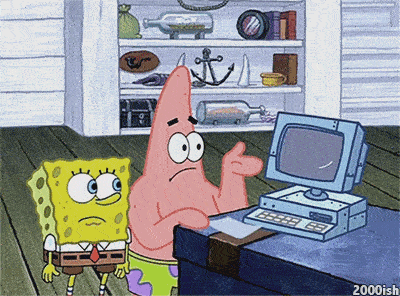Getting acquainted with the IT field often begins with an overview of existing and in-demand professions in the market. In doing so, one may come across numerous unclear abbreviations and positions. The essence of some can be guessed independently, while others may cause mild confusion.
Below, I will provide lists of professions that can be found in most IT companies. It is customary to use English names for most positions.
CEO (Chief Executive Officer) – in other words, the general director of the company. Sets the overall direction for development and defines key strategic points. Represents the company at top-level meetings.
CFO (Chief Financial Officer) – Chief Financial Officer of the company. Responsible for financial planning, cash flow management, and the company’s reserves.
COO (Chief Operating Officer) – director of current operational activities. Engaged in solving daily and urgent issues to ensure the smooth operation of the company.
CCO (Chief Commercial Officer) – commercial director. Responsible for the company's commercial strategy. The main areas in which the CCO works are related to sales, large projects, sales control, and marketing strategy.
CTO (Chief Technology Officer) – a director responsible for the development of new products and the implementation of technologies. Sets the directions of the services provided by the company, is responsible for the advancement, training, or retraining of employees.
Lead Generator – is engaged in the search for potential clients (lead). If there is any interest (for example, filling out the order form), the lead is passed to the sales (Sales Manager).
Sales Manager – is responsible for selling the company's services. His salary directly depends on the number of contracts concluded with clients.
Account Manager – client relations manager. Prepares cooperation agreements, is responsible for receiving payments from clients, and manages communication on financial matters.
Scrum Master – organizes the workflow in the team if the project is conducted using the Agile methodology Scrum. Monitors the proper progression of sprints, helps to resolve current issues.
Crysis Manager – helps to get out of crisis situations. Usually hired for a short term when there is a backlog on a project or a general crisis in the company. Can look at the situation from the outside and push management towards decisive actions such as dismissing ineffective employees or redirecting financial flows. For example, it is necessary to focus on development instead of advertising something that does not yet exist.
Project Manager – leads one or several projects. Acts as a liaison between the team and the client or their representative (product owner). Prepares technical specifications, plans and provides work for everyone, delivers interim results to the client, and handles reporting.
Product Manager – is usually involved in the development of one large product. Manages the team working on such a project, interacts with investors, is responsible for the presentation and release of new versions, and planning new functionalities.
Delivery Manager – works in the same team together with the manager and is responsible for the timely and quality delivery of the product. The essence of the job lies in controlling the intermediate results after the completion of sprints/milestones (parts into which the project development is divided). Mandatory skills for such a manager, besides managerial ones – are technical. He must understand whether the project is functioning correctly from the inside, having the competence to point out obvious mistakes. He also monitors the team's time expenditure.
Admin – is responsible for maintaining the operation of the local network and software in the company.
DevOps – ensures the operation of servers, maintains and configures cloud services, availability, and efficient operation of high-load projects.
UX (User Experience) Designer – is responsible for the product's usability for users. Thinks through the project's logic, creates prototypes, tests projects on real people.
UI (User Interface) Designer – is responsible for the visual part of the product. Selects the style: works with color, fonts, visual perception, and content.
Graphic Designer – creates logo designs, branding, draws banners for social media, illustrations, and more. Responsible for identity and corporate style. Often creates designs for printed materials, printing, and merchandise.
Product Designer – develops the design for a specific product. This can be a startup, while focusing on the core features and issues of this product, its improvement.
Motion Designer – works with interactive elements of the product. For example, creates animations for the website, designs micro-animations for the application interface, or presents to the client using video how their product will function after the release.
VR/AR Designer – the designer is engaged in the development of products for virtual or augmented reality. The profession is new, but it is gaining momentum every year.
Art-Director – head of the design department. Sets the main development vectors for designers, moderates their work, participates in group discussions, meets with clients.
Developers can be conditionally divided into several directions.
Web developers – develop websites for the Internet.
Mobile developers – create applications for smartphones.
Most popular division:
Front End Developer – is responsible for developing the part of the site that the user interacts with. Implements the visual appearance of the interface according to the design.
Back End Developer – develops all internal mechanics of the website.
The difference between the responsibility of the front and the back can be easily explained using the example of a clock. The way it looks, including the dial, hands, shape, and color – this is the front. And the back – this is the mechanisms of the clock, such as gears, springs, screws, etc.
Tech Lead / Team Lead – the leader of the development team. Depending on whether the emphasis is on technical skills or managerial skills, the appropriate prefix is added to Lead.
It is worth separately noting developer-architects who write large systems, as well as those who develop embedded systems, such as «smart home» or autonomous vehicle control systems.
Testing – checking the operation of the product as a whole and in parts, while identifying errors.
QC (Quality Control) – analyzes the testing results, checks the product for compliance with the main requirements outlined in the documentation.
QA (Quality Assurance) – checks the work of testers and QC, can not only identify bugs or other defects but also suggest ways to fix them. QA is a broader concept, and such a specialist can handle their own and the previous two jobs in a comprehensive manner.
Business Analyst – collects information, analyzes the market, communicates with the client, identifies problems and needs, and conveys this information to the team.
SMM (Social Media Marketing) – a person who engages in promoting a company and product on social media.
Marketing Specialist – promotes the company online, enhances its overall ranking and reputation, analyzes the service market and competitors.
Targetologist (engl. target — goal) – a specialist who deals with setting up advertising campaigns. Each of them is aimed at a specific audience, which implies a high interest in our content. Implementation most often occurs through popular social networks such as Instagram, Telegram, Facebook, YouTube.
Copywriter – is responsible for writing texts for the company's blog and social media.
UX (User Experience) Writer – writes texts for interfaces. The main task of such a person is to make the interface more understandable and pleasant through text prompts. They also often deal with documentation.
Technical Writer – simplifies and adapts technical documentation for the average user.
HR or Human Resources (pronounced eychar) – is responsible for searching and selecting employees for the company, as well as maintaining a normal psychological climate within the team.
Office Manager – is responsible for ensuring the office's operation. This person is in charge of the promised tea, coffee, cookies, and other delights.
Sometimes in companies, a separate recruiter is allocated. He is responsible only for personnel selection, while the rest is handled by the Happiness Manager. The latter provides employees with everything they need, talks to everyone, is responsible for engagement in team building, and for a friendly atmosphere.
There is also a separate classification for developers, designers, testers, and sometimes even for managers based on their level of skills and knowledge, as well as experience. They are divided into: Junior, Middle, and Senior, corresponding to specialists of entry-level, mid-level, and high-level.
This division is quite relative. While there is still a clear difference between Junior (commonly known as jun) and Middle levels, it is not always clear by what criteria a specialist can be considered Senior (commonly known as sen).
Follow me on Instagram – @frusia.pro – to stay updated on announcements for new lessons, watch homework checks in stories, ask questions, and look forward to many useful posts about design.







